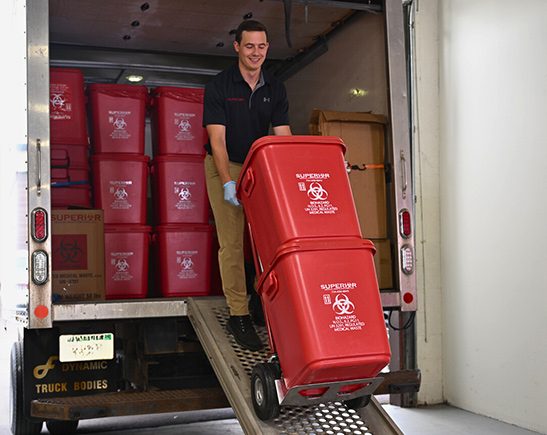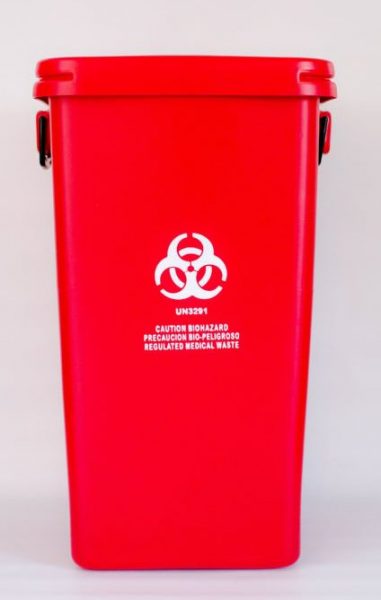Safeguarding Health: Professional Medical Waste Removal Services for a Tidy Setting
Safeguarding Health: Professional Medical Waste Removal Services for a Tidy Setting
Blog Article
The Value of Proper Clinical Waste Disposal: An Overview for Medical Care Facilities
Proper medical waste disposal is a critical element of medical care facility monitoring, ensuring the safety and wellness of clients, personnel, and the setting. From recognizing the various groups of clinical waste to abiding with governing needs, medical care centers have to take on reliable waste partition techniques and pick ideal disposal approaches.
Recognizing Clinical Waste Categories
Comprehending medical waste classifications is vital for appropriate disposal in health care facilities. Medical waste is a wide term that incorporates various kinds of waste produced in health care settings, such as facilities, healthcare facilities, and labs. Categorizing medical waste aids make certain that it is taken care of, saved, and disposed of safely and in conformity with relevant policies.
There are several categories of clinical waste that healthcare centers need to be mindful of. These classifications consist of contagious waste, sharps waste, pharmaceutical waste, chemical waste, and radioactive waste (medical waste disposal services with WasteX). Each classification has certain qualities and needs various disposal approaches to decrease the risk of harm to healthcare workers, individuals, and the setting
Infectious waste, for example, refers to waste infected with possibly contagious materials, such as blood, body liquids, and tissues. Pharmaceutical waste is composed of run out or extra medicines, while chemical waste consists of hazardous chemicals made use of in clinical procedures.
Conformity With Regulatory Needs
Health care facilities have to make certain conformity with regulative requirements for correct medical waste disposal. Regulatory bodies, such as the Environmental Protection Firm (EPA) and the Occupational Safety And Security and Health And Wellness Administration (OSHA), have established policies and standards to protect public health and the atmosphere. These regulations outline the proper handling, storage space, transportation, and disposal of clinical waste.
Conformity with governing requirements is vital for healthcare centers to avoid lawful penalties, reputational damages, and potential damage to human health and the atmosphere. Failure to follow these policies can cause fines, legal actions, and even the suspension or cancellation of running licenses.
To make certain compliance, health care centers ought to develop comprehensive waste monitoring programs that include personnel training, correct waste segregation, and the usage of appropriate containers and labels. Normal audits and inspections must additionally be conducted to determine any kind of non-compliance issues and address them without delay.
It is necessary for medical care facilities to stay up to day with adjustments in policies and update their waste administration techniques as necessary. This can be achieved by actively checking updates from governing bodies and participating in training programs and workshops.
Applying Efficient Waste Partition Practices
To ensure appropriate medical garbage disposal, healthcare facilities must implement efficient waste segregation methods. Waste segregation is an essential action in the total waste monitoring procedure, as it aids decrease the threat of infection, protects against cross-contamination, and ensures the safe disposal of various kinds of waste. Reliable waste segregation methods involve dividing clinical waste right into different categories based upon its features and possible dangers.
One typical method is the segregation of sharps waste, such as needles and scalpels, from other kinds of medical waste. Sharps waste must be put in puncture-resistant containers to avoid injuries and possible infections. Furthermore, harmful waste, such as chemicals and drugs, ought to be divided from general clinical waste visit their website to stop environmental contamination.
Proper labeling and color-coding of waste containers are vital for effective waste segregation. Noticeable and clear labels must be positioned on each container to indicate the kind of waste it contains and any type of unique handling demands - medical waste disposal services with WasteX. Additionally, color-coding can be utilized to distinguish between different waste groups, making it less complicated for health care team to get rid of and identify of waste properly
Routine training and education and learning for healthcare staff is vital for the effective implementation of waste segregation methods. Employee should be informed on the different waste classifications, correct partition strategies, and the importance of following waste administration procedures. This will certainly assist make certain conformity and uniformity in waste partition techniques throughout the center.
Finding Appropriate Disposal Approaches
Proper selection of appropriate disposal methods is necessary in making sure the secure and eco responsible management of clinical waste in health care facilities. Medical care facilities generate a variety of clinical waste, consisting of sharps, contagious waste, pharmaceutical waste, and chemical waste - medical waste removal service. Each sort of waste needs certain disposal approaches to minimize the risk of contamination, injury, and environmental harm
One common disposal technique for medical waste is incineration. Incineration entails the controlled burning of waste at high temperatures.

Chemical sanitation is an additional approach made use of for certain kinds of medical waste, such as pharmaceutical waste. This technique uses chemicals to reduce the effects of or damage contaminants. It is vital to select chemicals that are risk-free and eco friendly.
Sometimes, landfill disposal may be suitable for non-hazardous clinical waste (medical waste disposal services with WasteX). Nevertheless, correct segregation and product packaging are essential to stop leakage or contamination.
Ultimately, healthcare centers have to meticulously review the attributes of their medical waste and select ideal disposal approaches that prioritize safety, ecological security, and regulatory conformity. Routine training and monitoring are vital to ensure that medical care personnel follows correct disposal protocols.

Training and Educating Team on Appropriate Disposal Procedures
Personnel education and training play a critical role in ensuring the appropriate disposal of clinical waste in healthcare centers. It is vital that all team member, consisting of medical professionals, nurses, specialists, and assistance medical waste disposal services with WasteX team, obtain extensive training on proper disposal treatments. This training should cover the various types of medical waste, their possible hazards, and the suitable techniques for dealing with, setting apart, and throwing away them.
Among the primary objectives of team education and training is to make sure that all medical care professionals comprehend the relevance of proper disposal procedures and the prospective effects of incorrect waste monitoring. They need to be knowledgeable about the threats associated with medical waste, such as the transmission of infections and the contamination of the atmosphere. medical waste removal. By comprehending these dangers, personnel will certainly this content be more motivated to comply with appropriate disposal procedures and take the needed preventative measures to protect themselves, their colleagues, and the community
Training ought to also cover using personal protective equipment (PPE) and the proper techniques for handling medical waste. Personnel should be informed on exactly how to identify and segregate various kinds of waste, such as sharps, contagious waste, and dangerous chemicals. They ought to additionally be trained on the proper use waste containers, such as sharps containers and biohazard bags, as well as the value of labeling and sealing these containers correctly.
Furthermore, staff education and training need to consist of routine updates and refresher courses to ensure that medical care experts stay informed concerning the current policies and best techniques in medical waste disposal. This recurring education is essential to maintain a high degree of awareness and conformity amongst staff participants.
Final Thought
In verdict, proper medical waste disposal is of utmost value for medical care facilities. Understanding the different classifications of clinical waste and abiding with regulatory requirements guarantees the security and wellness of both medical care employees and the basic public.
From comprehending the various classifications of clinical waste to complying with regulative needs, healthcare facilities have to adopt reliable waste partition practices and pick appropriate disposal techniques. These classifications consist of infectious waste, sharps waste, pharmaceutical waste, chemical waste, and contaminated waste.To make certain proper clinical waste disposal, medical care centers should carry out efficient waste partition practices. Waste segregation is a critical step in the general waste monitoring procedure, as it aids minimize the danger of infection, stops cross-contamination, and makes certain the safe disposal of different types of waste. Healthcare facilities produce a range of clinical waste, consisting of sharps, contagious waste, pharmaceutical waste, and chemical waste.
Report this page